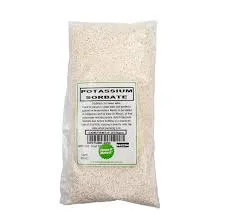
e435 food additive
Understanding E435 A Food Additive
E435, also known as Polyoxyethylene (20) sorbitan monooleate, is a food additive widely used in the food industry for its emulsifying properties. As a part of the E-number classification system, which is utilized in Europe to identify food additives, E435 plays a crucial role in improving the texture, stability, and shelf-life of various products. This article delves into the functions, safety, and applications of E435 in the modern food industry.
What is E435?
E435 is derived from sorbitan, a sugar alcohol, and ethylene oxide. This compound acts as a non-ionic emulsifier, which means it helps to blend ingredients that typically do not mix well, such as oil and water. Due to its emulsifying properties, E435 is commonly found in many processed foods, including baked goods, dressings, sauces, and margarine.
Functions of E435
The primary function of E435 is to stabilize emulsions, allowing for a smooth and consistent product. For instance, in salad dressings, E435 helps to maintain a uniform texture, preventing the oil from separating from the vinegar or other components. It also enhances the mouthfeel and overall sensory experience of food products, which is vital in an industry where customer satisfaction is key.
e435 food additive

In addition to emulsification, E435 can also have a role in improving the shelf-life of products. By stabilizing the components of processed foods, it can reduce the likelihood of spoilage, thereby extending the product's durability and reducing food waste. Furthermore, its use in baked goods can enhance moisture retention, contributing to a fresher taste and longer-lasting quality.
Safety and Regulations
Concerns about food additives often arise, and E435 is no exception. However, numerous studies have indicated that E435 is generally recognized as safe for consumption when used within the established limits. Regulatory bodies, such as the European Food Safety Authority (EFSA) and the U.S. Food and Drug Administration (FDA), have evaluated its safety and determined acceptable daily intake levels for consumers.
While E435 is considered safe for most people, there may be exceptions. Individuals with allergies to certain types of polyethoxylated compounds should exercise caution. Additionally, those following specific dietary restrictions or lifestyles may wish to avoid products containing E435.
Conclusion
E435 is an essential food additive that serves multiple functions in enhancing food quality and stability. Its role as an emulsifier makes it indispensable in the food industry, contributing to the texture, flavor, and shelf-life of various products. As consumers become more educated about food additives, understanding substances like E435 provides insight into food manufacturing processes and enables informed choices in dietary habits. As long as it is consumed within recommended limits, E435 can be part of a safe and enjoyable eating experience.
-
Nitrile Rubber Honoring Strict Production StandardsNewsAug.22,2025
-
Aspartame Ingredients Honoring Food Safety ValuesNewsAug.22,2025
-
Fertilizer for Balanced Plant NutritionNewsAug.22,2025
-
Cyanide Gold Processing with High Purity AdditivesNewsAug.22,2025
-
Formic Acid in Textile Dyeing ApplicationsNewsAug.22,2025
-
Aluminum Hydroxide Gel in Skincare ProductsNewsAug.22,2025
-
Regulatory Compliance for Global Mining Chemicals UseNewsAug.12,2025
Hebei Tenger Chemical Technology Co., Ltd. focuses on the chemical industry and is committed to the export service of chemical raw materials.
-

view more DiethanolisopropanolamineIn the ever-growing field of chemical solutions, diethanolisopropanolamine (DEIPA) stands out as a versatile and important compound. Due to its unique chemical structure and properties, DEIPA is of interest to various industries including construction, personal care, and agriculture. -

view more TriisopropanolamineTriisopropanolamine (TIPA) alkanol amine substance, is a kind of alcohol amine compound with amino and alcohol hydroxyl, and because of its molecules contains both amino and hydroxyl. -

view more Tetramethyl Thiuram DisulfideTetramethyl thiuram disulfide, also known as TMTD, is a white to light-yellow powder with a distinct sulfur-like odor. It is soluble in organic solvents such as benzene, acetone, and ethyl acetate, making it highly versatile for use in different formulations. TMTD is known for its excellent vulcanization acceleration properties, which makes it a key ingredient in the production of rubber products. Additionally, it acts as an effective fungicide and bactericide, making it valuable in agricultural applications. Its high purity and stability ensure consistent performance, making it a preferred choice for manufacturers across various industries.





